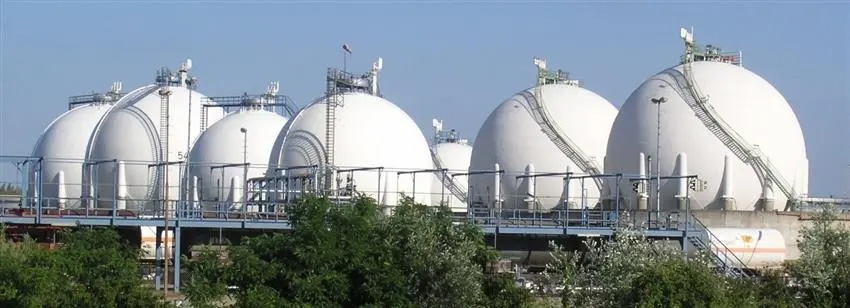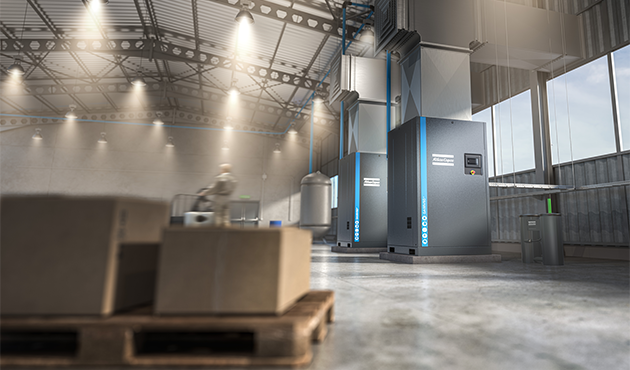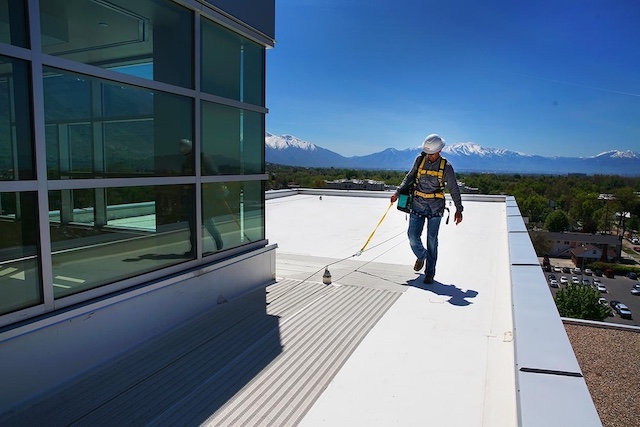Surge instability strongly limits the operating range of turbo-compressors. Surge prevention, based on the use of an active anti-surge valve, is one way to battle the surge and other instabilities at low-flow operations.
It is important predict the safe and reliable operating range of a turbo compressor. And while the boundary towards high flow-rates is not so difficult to predict and prevent, the limit towards low flow-rates, also known as “surge," can be a challenge. The unsteady energy associated with a surge cycle can be employed to express surge intensity. This definition can allow for a quantitative approach to surge in a turbo-compressor.
Signs of surge
Surge is a dynamic instability that occurs in turbo-compressors. As the flow through a compressor is reduced, a point is reached where the flow pattern becomes unstable. Surge happens quickly, and conventional instruments usually fail to recognize the effects of surge. In the same way, conventional actuators and valves often fail to prevent it.
Vibration alarm and shutdown are considered by some engineers to be a tool that protects against the surge, but often, the surge is not identified by the vibration alarm, and some minor damages could be expected. As a result of surge, the compressor vibrates in the axial direction. Too often, other vibration readings are impacted, but the main impact is in the axial vibration.
Another indication of surge could be a loss in compressor efficiency, which again requires some time to sense the effects and calculations. At the time of surge, flow reverses usually at a rate between 0.4 and 8 Hz (most often between 0.6 and 2.5 Hz). The surge severity and frequency depends on the piping systems and the downstream facilities of the compressor. For most industrial compressor packages, the surge frequency is around 1 Hz. When monitoring surge, it is generally useful to verify the flow reversal frequency range associated with the surge of each compressor package.
Stall and surge
Stall is another instability that occurs in turbo-compressors. This should not be confused with surge. In stall, the flow oscillates in localized regions around the rotor.
As each stage of the turbo-compressor approaches its stall limit, it does not stall instantly or completely, but rather, stalled cells are formed. In axial compressors, these stall cells can extend from a few blades up to 180 degrees around the annulus of the compressor. These cells, in addition, tend to rotate around the flow annulus at about half of the rotor speed while the average flow across each stage remains positive. Operation in this region is relatively short and usually progresses into a complete stall.
Stall is an aerodynamic instability confined to the turbo-compressor internals that is usually characterized by a distortion of circumferential flow patterns. One or more regions of stagnant flow (“stall cells”) travel around the circumference of the compressor at 10% to 90% of the shaft speed. The stall cells can reduce or completely block the flow, resulting in large vibratory stresses and thermal loads on the compressor rotating components. Stall introduces a gradual or abrupt drop of the pressure rise. Moreover, stall can introduce hysteresis into the system, implying that the flow-rate has to be increased beyond the stall initiation point in order to bring the compression system out of its stalled operating mode.
Surge in practice
Given the potential risk of damage due to violent surge oscillations, turbo-compressors are usually operated at a safe distance from the surge zone. The imposed offset can impact the achievable pressure rise and ability to operate at off-design conditions. Even for a compressor operating relatively far from the surge curve, unexpected events can occur that can cause the compressor operating point to cross the surge line. For example, shutting off downstream processes or changing the production rate imply a load change for the compressor that can cause the system to enter surge.
When a large volume is connected to the discharge of the compressor, the operating point moves towards the surge line during deceleration because the flow-rate will change faster than the pressure in large volume. An emergency shutdown is an extreme example of compressor deceleration that can trigger surge.
Anti-surge systems
An important aspect of an anti-surge system is the selection and operation of sensors and actuator(s). The type and location of sensors and actuators should be chosen such that it becomes possible to measure and influence the behavior of the compressor system in an adequate manner to prevent surge and its associated problems and damages. Furthermore, the choice for specific sensors and actuators and their location in the system can influence the structure of the compressor control and operation.
A typical compression system can be equipped with a variety of pressure, temperature, and flow sensors. However, dynamic flow measurements are usually not available as required by an anti-surge system. Furthermore, conventional temperature sensors might not useful for the anti-surge purposes. Proper instruments should be provided for an anti-surge system. A close-coupled anti-surge valve yields the best anti-surge system nearly for any turbo-compressors.
Anti-surge controllers
Special feedback, open-loop backup control schemes, and fast-acting instruments and actuators are required to prevent surge because of the fast nature of the surge phenomenon. There is a need for an open-loop backup anti-surge scheme in addition to the feedback anti-surge scheme.
There should be a margin or offset between the surge curve and anti-surge controller set-points. How large the surge offset (the margin) needs to be depends on the speed of instruments, the speed of actuators and the speed of the fastest disturbances that should not trip the anti-surge open-loop backup system. It is usually undesirable to activate anti-surge open-loop backup systems since too often it means considerable disturbances or shutdown of a turbo-compressor.
In most cases, an optimum surge margin should be achieved. If the anti-surge instruments are fast, the anti-surge feedback controller is tuned properly and overcorrection is a concern. A poorly designed anti-surge system may need a margin of 16% or more, whereas a well-designed anti-surge system may have its margins at less than 8%. The energy savings for part-load operations increase as margins reduce since it prevents the unnecessary recycling of gas by an anti-surge valve.
Anti-surge valves
A fast-opening and relatively slow-closing anti-surge valve can help prevent a second surge cycle. The closing speed should be an optimum figure. For example, many anti-surge valves are designed for an opening time of 1 or 2 seconds and a closing time of 3 to 6 seconds. An anti-surge valve is a reverse-acting (air fail open). For relatively small valves (say below 6 inches), full stoking time is less than 1 second, for larger valve the time could be 1.5 second or sometimes slightly less than 2 second. A volume booster should be used to increase the throttling speed of an anti-surge valve. The volume booster is a pneumatic relay with a large flow capacity. The booster mounting should be carefully designed to minimize the size and length of air piping. If a solenoid valve is required for interlocks, it should be a two-way valve with a large-flow capacity. It is important that the fastest possible surge scenario (disturbance that can result in surge) be identified and estimated before the anti-surge valve is ordered.
Surge, piping and facilities
Inappropriate piping or downstream facility system designs can contribute to a surge event. The whole compression system should be designed and operated to eliminate or minimize the potential for compressor surge. To prevent sever surge from occurring, compressor systems and their associated piping and equipment should be designed in a way to avoid surge, or to bring the unit out of surge quickly if it occurs. The problem is particularly accentuated when a large volume of high-pressure gas is retained in the yard piping, including gas inter-stage coolers or after coolers.Once unstable, the unit will experience large flow reversals and pressure transients that cause a violent vibration of the compressor rotor, bearings, and casing.
The likelihood and magnitude of a surge event is based on a compressor’s interactions with the following factors:
- Physical components, such as piping geometries, vessel volumes, cooler volumes, fittings, and recycle and check valve parameters.
- The compressor train’s inertias (fluid and compressor/driver inertias) and compressor performance characteristics.
- Anti-surge system strategy, details, and timing.
Gas and equipment dynamic interactions of other elements employed in compression systems, such as check valves, relief valves, and blow-down systems, are also important and have to be investigated for a successful operation of an anti-surge system.
Amin Almasi is a senior rotating equipment consultant in Australia. He is chartered professional engineer of Engineers Australia (MIEAust CPEng – Mechanical) and IMechE (CEng MIMechE) in addition to a M.Sc. and B.Sc. in mechanical engineering and RPEQ (Registered Professional Engineer in Queensland).
Edited by Jessica DuBois-Maahs, associate content manager, CFE Media, [email protected].



